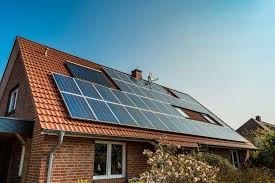Thinking of Investing? The Sectors to Watch Post-COVID 19
January 25, 2021Chinese Solar Giants set to grow even bigger with Climate Change driving Renewable Energy Demand
January 29, 2021Solar Panel Installation Guide
Consider the Age of Your Roof
While modern solar panel installations are much lighter than those in the past, you will need a fairly new roof for the best results. Talk to a structural engineer to make sure that your roof will tolerate the weight of a solar panel array and that your roof is in good enough shape for a solar panel array. Make certain that your installation contractor is well aware of the risks of your area, including sun damage to the existing roof, animals that may find their way into your home through the wiring leads, and water risks.
Check Your Electrical and Upgrade As Necessary
Make certain that the electrical system your solar panels are feeding will properly manage incoming electricity. Many older homes can have wiring that may not be conducive to harvesting solar power. Again, do your homework. If you need to upgrade your roof and your electrical system before you can install your solar panel array, the savings may be limited.
Angle is Important
The angle of your roof is critically important. If you have a south-facing roof slab with little shade from nearby buildings and trees, your solar array will do well. For those in older neighborhoods with established trees, take a look at the shade currently falling on your home. While solar can harvest in dappled sunlight, a well-shaded roof may not be the best option for solar power capture. A sunpower solar panel installer in your area will be able to help you analyze this and figure out if your roof is conducive to solar panels.
North/South Vs. East/West
If the roof on your house faces east/west, your solar capture will be somewhat limited, particularly if your home is in the far north of the northern hemisphere or the far south of the southern hemisphere. However, your array will capture enough sunlight to make the investment worthwhile for the long term, particularly if your roof gets full sun with little shade through the course of the day.
Choosing the Right Panels
New panel technology is getting lighter and more efficient all the time. Because these panels have few moving parts, there’s little that can fail. However, it’s important that you work with a panel manufacturer and an installer with solid business history. For example, you may pay for the install but lease the panels, so you can get upgrades in the future as efficiencies improve or in the event of weather damage. Consider also getting a warranty in the installation labor to reduce the risk of leaks and other problems over time. When it comes down to choosing a design, it’s no doubt different for everybody.
A solar panel array can make it easier to sell your home in the future. It can also give you a tax break and lower your utility costs. Over time, the investment will pay for itself and you can enjoy trouble-free, low-cost electricity for years to come.
Also, read about how to maintain your Solar Panels

